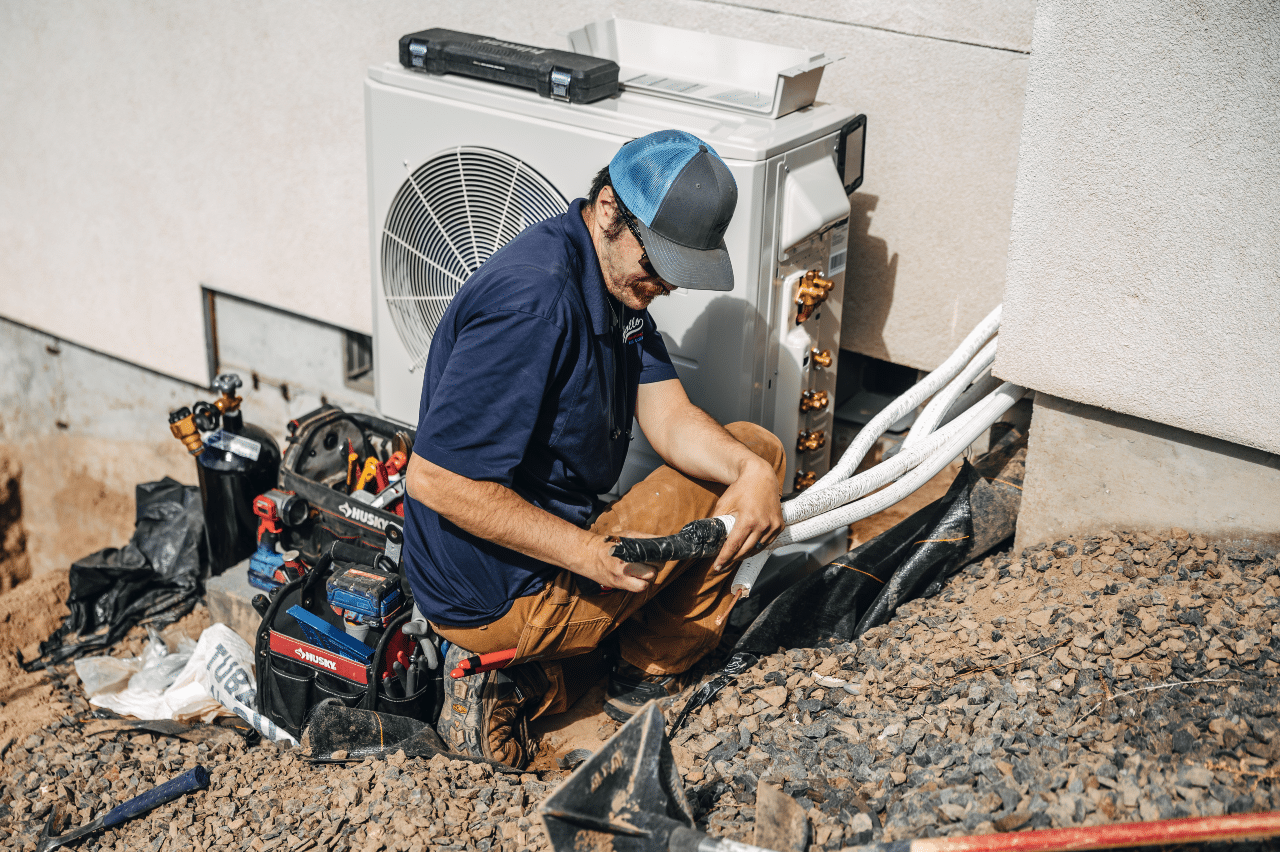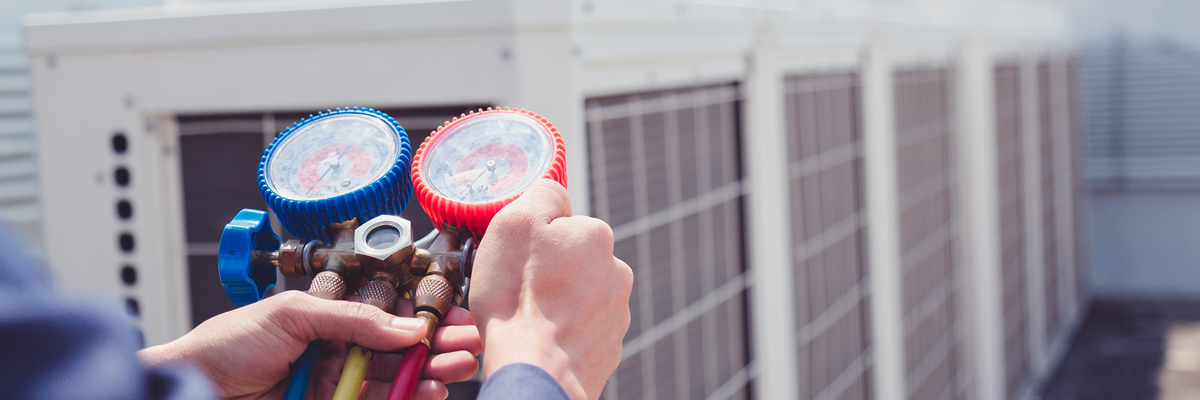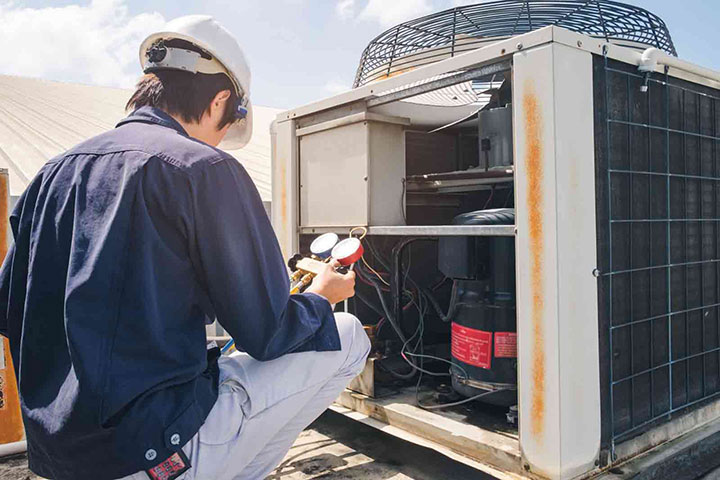Exactly How a Warm Pump and Heater Collaborate to Enhance Your Home's Home heating Effectiveness
Recognizing exactly how a heatpump and heating system interact is important for property owners seeking reliable home heating remedies. Each system has its strengths, supplying a balanced approach to home convenience. The warm pump succeeds in moderate temperature levels, while the heater delivers rapid heat during severe cold. This harmony not only decreases energy prices yet likewise enhances the life expectancy of both home appliances. What variables affect this collaboration, and just how can home owners maximize their benefits?
Comprehending Heat Pumps: How They Function
Several individuals might be strange with their inner operations, warmth pumps play a necessary duty in modern-day home heating systems. These tools run by moving warm from one place to an additional, using the concepts of thermodynamics. In chillier months, a heatpump essences warmth from the outdoors air, ground, or water, and transfers it indoors to heat the home. On the other hand, throughout warmer months, it can turn around the process, acting as an ac system by eliminating heat from inside to the outside.Heat pumps contain an evaporator, compressor, condenser, and growth valve. The refrigerant within the system absorbs warmth as it vaporizes at low temperatures and pressures. The compressor after that raises the pressure and temperature of the refrigerant, allowing it to release warmth as it condenses. This efficient procedure can significantly lower power usage contrasted to conventional heating approaches, making heatpump a lasting option for environment control in homes.
The Role of Furnaces in Home Home Heating
Furnaces play an essential duty in home heating by providing a trustworthy source of warmth throughout the colder months. They run by creating warmth through combustion or electric resistance, dispersing it throughout the home by means of ducts or glowing systems. The efficiency of a furnace is frequently determined by its Annual Gas Application Effectiveness (AFUE) score, which indicates exactly how successfully the device converts gas into heat.Furnaces can make use of numerous energy resources, including all-natural gas, electrical power, oil, or gas, allowing home owners to pick one of the most ideal alternative for their demands. Unlike heatpump, which may have a hard time in extreme cold, heating systems keep constant efficiency, making certain that indoor temperatures stay comfy despite outdoor problems. Furthermore, modern-day furnaces usually come geared up with innovative innovation, such as smart thermostats and variable-speed blowers, boosting their efficiency and responsiveness. This versatility makes heaters an essential component in all-encompassing home heating techniques.

Benefits of Using Both Systems Together
Incorporating the strengths of both furnaces and warm pumps can bring about a much more effective and reliable home heating option. Making use of both systems allows home owners to make use of the heatpump's energy effectiveness during milder temperatures while relying upon the furnace for more severe cold conditions. This double method can greatly reduce power prices, as warm pumps eat less electricity than standard heating approaches when temperatures are moderate.Additionally, making use of both systems together can enhance convenience levels in the home. Heatpump can supply constant, also heating, while heaters can swiftly increase ambient temperatures when required. The assimilation of both systems can extend the lifespan of devices by decreasing wear and tear on each system, as they share the work. Ultimately, property owners can enjoy a well balanced, economical home heating service that adjusts seamlessly to differing climate condition, making certain a warm and inviting home throughout the winter season.
How Heat Pumps and Furnaces Enhance Each Various Other
When property owners integrate heatpump and furnaces, they produce a complementary heating unit that takes full advantage of performance and convenience. Heatpump operate by moving warmth from the outdoors air or ground, making them extremely effective in modest environments. They excel during milder temperatures, providing economical heating. Alternatively, heating systems produce warmth through burning or electric resistance, delivering strong, instant warmth during severe chilly conditions.The combination of these two systems permits vibrant modifications based on temperature level variations. Throughout warmer months or milder wintertime days, the heat pump can take the lead, preserving energy and minimizing costs. As temperatures decrease, the heater can seamlessly involve, ensuring regular warmth throughout the home. This harmony not only maximizes power use yet also improves the life expectancy of both systems, as each unit runs within its ideal efficiency array. Together, they develop a well balanced setting that adjusts to varying climate needs.
Enhancing Effectiveness: Tips for Homeowners
House owners can improve their heating effectiveness through several sensible methods. Establishing a regular upkeep schedule, incorporating smart thermostat technology, and applying effective insulation and sealing options are vital actions. These procedures not only improve convenience yet also decrease power costs.
Regular Upkeep Schedule
To guarantee maximum heating efficiency, establishing a normal maintenance timetable is crucial for any kind of home. Home owners need to prioritize regular inspections of both warmth pumps and heaters to ascertain peak performance. This includes altering air filters every one to three months, as stopped up filters can greatly minimize performance. Additionally, organizing specialist maintenance a minimum of when a year enables technicians to determine and resolve prospective problems before they intensify. Property owners must likewise clean up the heatpump's outdoor system to stop particles buildup that can impede air flow. By sticking to a routine upkeep routine, homeowners not only boost their heating unit' effectiveness however also prolong their life-span, resulting in better convenience and lowered energy prices throughout the cooler months.
Smart Thermostat Integration
Incorporating a wise thermostat right into a home heating system can significantly boost power efficiency, particularly as it permits precise control over temperature level setups. These gadgets can learn the property owner's schedule and choices, automatically changing the browse around here temperature to enhance comfort while minimizing power usage. address For example, they can lower heating during times when the home is empty, minimizing unnecessary consumption. Lots of clever thermostats additionally offer real-time power usage information, enabling property owners to make enlightened decisions concerning their heating behaviors. Additionally, remote accessibility through mobile phone applications permits individuals to adjust setups from anywhere, making sure the home is warm upon return. In general, clever thermostat integration not only improves comfort yet considerably adds to power financial savings and efficiency.
Insulation and Securing Solutions
Smart thermostats play a crucial function in power performance, however their efficiency can be substantially improved by appropriate insulation and securing services. Property owners need to prioritize protecting floorings, wall surfaces, and attic rooms to minimize heat loss. Top notch insulation materials, such as spray foam or fiberglass, can considerably enhance thermal resistance. In addition, securing voids around windows, doors, and air ducts stops chilly air seepage and warm retreat. Weatherstripping and caulking work techniques for dealing with these leakages - heat pump replacement ooltewah tn. Normal inspections for air leakages, together with using blower door tests, can aid identify issue locations. By spending in insulation and securing, home owners can maximize the efficiency of their furnace, eventually causing decreased energy usage and lower energy costs
Common Misconceptions Regarding Warm Pumps and Furnaces
What false impressions surround warm pumps and heaters? Several individuals incorrectly right here believe that warmth pumps are inadequate in cooler environments. Actually, contemporary warm pumps are developed to operate successfully also in reduced temperature levels, giving reputable heating throughout winter season. Another usual misconception is that heating systems are always much more effective than heatpump. This depends on the certain energy resources and efficiency scores of the units in inquiry. Some may likewise believe that making use of both systems simultaneously is unnecessary, however as a matter of fact, this mix can optimize home heating performance, particularly throughout severe weather. In addition, individuals often assume that heatpump call for consistent upkeep, when actually, they have similar maintenance needs to standard heating unit. By debunking these myths, home owners can make more educated decisions regarding their home heating choices, eventually bring about boosted comfort and energy effectiveness in their homes.
Maintenance Factors To Consider for Combined Equipments

Often Asked Inquiries
Can Heat Pumps Work Effectively in Extremely Cold Climates?
Heatpump can have a hard time in very cold environments because of reduced efficiency and warmth extraction limitations. Developments in technology have led to models developed for far better performance in such conditions, enhancing their stability in rough settings.
Just How Lengthy Do Warm Pumps and Furnaces Normally Last?
Warmth pumps generally last 15 to 20 years, while furnaces have a lifespan of 15 to three decades. Regular maintenance can extend their long life, making certain reliable procedure and decreasing the need for premature substitutes.

What Is the Average Cost of Putting Up Both Equipments?
The ordinary expense of installing both a heatpump and a furnace usually ranges between $5,000 to $10,000 - heat pump service. Factors affecting this cost include system size, installation intricacy, and local labor rates
Are There Tax Obligation Rewards for Using Energy-Efficient Heating Solutions?
Lots of home owners inquire concerning tax rewards for energy-efficient heater. Numerous federal and state programs usually use refunds or credit scores, urging the fostering of sustainable modern technologies to minimize power intake and advertise environmental obligation.
Just how Do I Pick the Right Dimension Warmth Pump and Heating System?
Choosing the appropriate dimension heatpump and furnace includes calculating the home's square video, taking into consideration insulation high quality, and assessing regional environment. Consulting an expert can assure ideal system performance and power efficiency based upon specific requirements. ductless mini splits. Comprehending exactly how a heat pump and heater work with each other is essential for house owners seeking reliable heating solutions. In chillier months, a warm pump extracts warm from the outdoors air, ground, or water, and transfers it inside to warm the living space. When home owners integrate warm pumps and furnaces, they develop a complementary home heating system that optimizes performance and comfort. Heat pumps operate by transferring heat from the outdoors air or ground, making them extremely reliable in moderate climates. Warm pumps can struggle in extremely cool environments due to reduced performance and heat extraction limitations